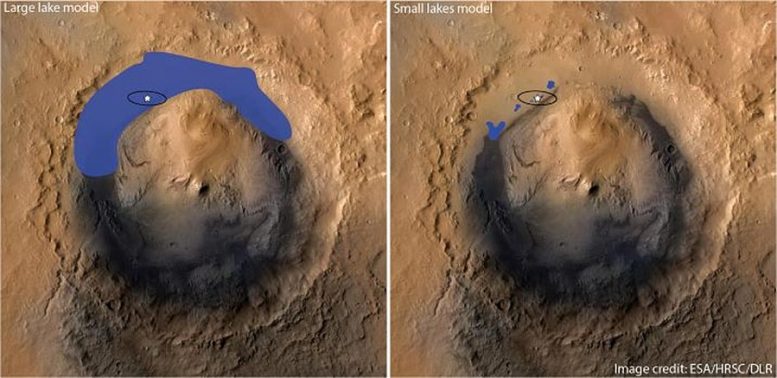
Mars Uncovered: Innovative Research Transforms Our Insight into the Water History of the Red Planet
For many years, researchers have been captivated by the surface of Mars — a frigid, windswept terrain characterized by ancient river valleys, enigmatic dark streaks, and vast impact craters. As robotic probes traverse the Red Planet and probe its soil, insights keep emerging, aiding scientists in assembling a rich, intricate narrative of Mars’s history and its ongoing geological changes. This month, three pioneering studies provide fresh perspectives on Mars’s elusive connection with water and dust, overturning outdated theories and paving the way for thrilling new exploration opportunities.
Dust Takes the Spotlight: Dark Streaks Not Linked to Liquid Water
Since the 1970s, NASA missions have identified lengthy, dark streaks descending Martian slopes that appeared to fluctuate with seasonal changes. Known as Recurring Slope Lineae (RSL), these formations fueled optimism that they might indicate present-day water flow—a captivating possibility for scientists exploring past life or preparing for future human endeavors.
Nevertheless, a recent study published on May 19 in Nature Communications raises significant doubts about this assumption. Researchers from Brown University and the University of Bern utilized machine learning algorithms to examine over 86,000 satellite images, documenting more than half a million RSL features throughout the Martian terrain. By linking their global dataset with environmental factors like temperature, wind speed, and humidity, the research team arrived at an unexpected conclusion: the streaks are dry dust avalanches, not trails sculpted by saline water.
Lead researchers Adomas Valantinas and Valentin Bickel found substantial correlations between RSL formation and elements such as wind and terrain incline, rather than water-conducive conditions. The study indicates that the observed darkening is caused when wind shifts thin layers of dust, uncovering darker material beneath — often precipitated by shockwaves from impacts, rockslides, or swirling dust devils.
Instead of detracting from Mars’s fascination, these findings enhance scientists’ methods for interpreting Martian surface phenomena. Importantly, recognizing dry-based processes aids mission planners in correctly identifying non-biological environments as potential habitats, thereby safeguarding delicate extraterrestrial ecosystems from unintentional pollution.
Ancient Aquifers: Mars’s “One-Way” Water System
While contemporary Mars is arid and barren, its ancient history reveals a strikingly different scenario. A group of graduate researchers from the University of Texas at Austin recently published a study in Geophysical Research Letters that updates our perception of the planet’s early hydrological cycle.
The research indicates that during Mars’s wetter epochs billions of years ago, surface water slowly seeped into vast underground aquifers. Unlike Earth—where the water cycle functions as a dynamic process of evaporation, precipitation, runoff, and groundwater replenishment—Mars demonstrated what researchers term a “one-way” water mechanism.
Employing models of Martian geology and hydrology, the team calculated that it could take between 50 to 200 years for water to permeate a mile below the surface—a remarkably slow process compared to Earth’s swift water movement. Once trapped underground, the water was essentially immobilized, with no active cycling back to the surface.
This model clarifies why Mars today showcases so few visible water bodies or active water-related phenomena. It also explains the fate of Mars’s ancient water, likely imprisoned within subterranean reservoirs that may one day prove crucial for human colonization efforts.
The study offers another perspective for assessing Martian habitability. If water remained confined underground for long ages, might life—if it ever thrived—have migrated below the surface?
Deuteronilus Cavus: A Glimpse into Martian Geological Richness
At the same time, the European Space Agency’s Mars Express orbiter has provided breathtaking images of Deuteronilus Cavus, a crater-like depression brimming with geological variety that narrates a layered history of the Red Planet’s development.
Spanning approximately 120 kilometers, Deuteronilus Cavus lies within Mars’s transitional zone between its ancient southern highlands and flatter northern plains. Thought to be an impact crater formed between 4.1 and 3.7 billion years ago, this area has since been altered by a mix of planetary dynamics: flowing water, glacial processes, volcanic deposits, and potent wind erosion.
ESA’s images showcase stratified landscapes characterized by deeply incised channels, possibly shaped by meltwater from ancient glaciers or subsurface drainage. Mounds of rock debris and polished boulders exhibit the signs of glacial scrubbing. Dark volcanic ash layers blanket parts of the crater’s floor, while lighter sections harbor clay minerals formed through chemical interactions between water and volcanic materials — clear indicators of past water existence.
Deuteronilus Cavus serves as a natural archive, maintaining physical proof of significant climatic and environmental transitions over billions of years. Investigating locations like these is vital for reconstructing Mars’s geological narrative and